Ist eine 10 -kW -Batterie genug, um ein Haus zu führen?
Wenn Sie sich mit der Energiespeicherung zu Hause beschäftigen, Eine der ersten Fragen ist immer die nach Größe und Kapazität. Sie sehen Zahlen wie „10 kW" und staunen, „Ist das genug, um mein Haus während eines Stromausfalls zu versorgen?“?" Es ist eine entscheidende Frage, Und die Antwort hängt davon ab, was Sie mit Strom versorgen möchten und wie lange.
Erste, Lassen Sie uns einen Schlüsselbegriff klären. Die Leistung einer Batterie wird in Kilowatt angegeben (kW), aber seine Energiespeicherkapazität wird in Kilowattstunden angegeben (kWh). Wenn Leute nach einer „10-kW-Batterie“ fragen" zur Laufzeit, Sie meinen fast immer eine 10-kWh-Batterie. Eine 10-kWh-Batterie reicht oft aus, um die wesentlichen Verbraucher eines Hauses zu betreiben – wie zum Beispiel die Beleuchtung, Kühlschrank, und Internet – für viele Stunden oder über Nacht. Jedoch, Es reicht im Allgemeinen nicht aus, ein ganzes Haus zu betreiben, insbesondere bei schweren Lasten wie Hochleistungsklimaanlagen, über einen längeren Zeitraum.
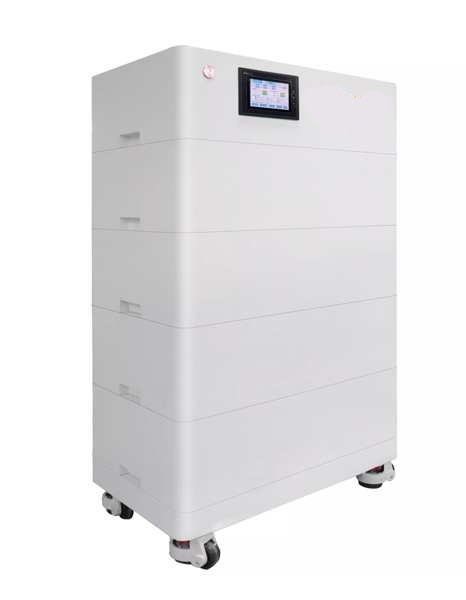
Bei Gycx Solar, Wir sind auf Design spezialisiert Stapelbare Heimbatterie Systeme, die perfekt auf die Bedürfnisse unserer Kunden abgestimmt sind, sei es als unverzichtbarer Ersatz während eines Taifuns oder zur Maximierung der Solarenergieeinsparungen. Lassen Sie uns in die Details eintauchen.
Was sind gestapelte Batterien??
Moderne Energiespeicherlösungen werden oft als „gestapelt“ bezeichnet" oder „stapelbar“." Batterien. Was bedeutet das, und wie unterscheidet es sich von einem Single?, eigenständige Batterie?
Gestapelte Batterien, oder „stapelbare Batterien“.," sind modulare Energiespeichereinheiten, die speziell dafür entwickelt wurden, physisch zusammengefügt und elektrisch miteinander verbunden zu werden, um ein größeres Ganzes zu bilden, Einheitliche Batteriebank. Jedes Modul ist eine eigenständige Batterie (häufig unter Verwendung sicherer LFP-Lithiumchemie mit eigenem BMS) das fungiert als Baustein. Mit diesem Design können Sie die Kapazität Ihres Systems einfach skalieren, indem Sie weitere Module hinzufügen, Schaffung einer maßgeschneiderten und zukunftssicheren Energielösung.
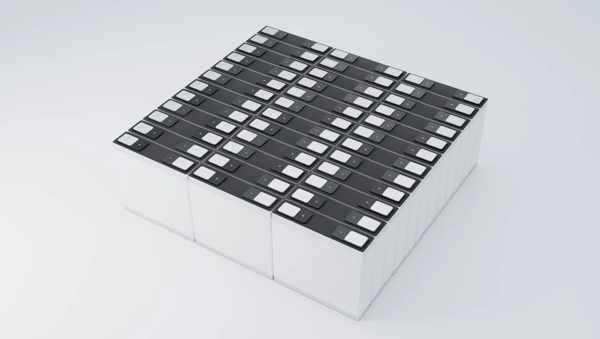
Tauchen tiefer: Die Kraft des modularen Designs
Das Konzept eines Stapelbare Heimbatterie basiert auf mehreren Grundprinzipien:
- Modularität: Jede Batterieeinheit ist ein standardisiertes Modul (Z.B., 5kWh). Dadurch können Sie mit der Kapazität beginnen, die Sie jetzt benötigen, und später weitere hinzufügen.
- Skalierbarkeit: Dies ist der Hauptvorteil. Wenn Sie in Zukunft ein Elektrofahrzeug kaufen, Sie können Ihrem Stapel einfach ein weiteres Batteriemodul hinzufügen, anstatt das gesamte System auszutauschen.
- Entwickelt für Sicherheit: Diese Module sind mit Funktionen für sicheres physisches Stapeln ausgestattet (wie ineinandergreifende Gehäuse oder Rackmontage) und verfügen über geschützte Anschlüsse für einen sicheren elektrischen Anschluss.
- Intelligente Integration: Jedes Modul verfügt über ein eigenes Batteriemanagementsystem (BMS), Sie sind so konzipiert, dass sie miteinander kommunizieren und mit Ihrem Solarwechselrichter als Ganzes funktionieren, intelligent, und hocheffiziente Batteriebank.
Dieser Ansatz, die wir bei Gycx Solar nutzen, bietet unseren Kunden einen flexiblen und kostengünstigen Weg zur Energieunabhängigkeit.
Wie lange hält eine 15-kWh-Batterie??
Das Verständnis der Laufzeit ist der Schlüssel zur Dimensionierung Ihres Akkus. Wenn eine 10-kWh-Batterie nicht für ein ganzes Haus ausreicht, Wie viel mehr Zeit bietet Ihnen ein größerer 15-kWh-Akku??
EIN 15kWh-Batteriespeicher 50% mehr Energie als eine 10-kWh-Batterie, also wird es dauern 50% länger während dieselben Haushaltslasten mit Strom versorgt werden. Zum Beispiel, wenn eine Sammlung wesentlicher Gerätezeichnung 500 Watt würden eine 10-kWh-Batterie in etwa entladen 20 Std., Dieselbe Last würde ungefähr für etwa 15 kWh von einer Batterie mit Strom versorgt 30 Std..
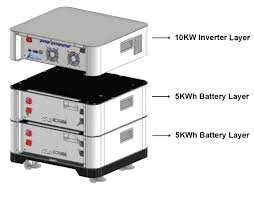
Tauchen tiefer: Ein praktischer Laufzeitvergleich
Schauen wir uns die Rechnung mit einigen üblichen Haushaltslasten in Südkorea an:
Die Formel: Laufzeit (Std) = Batteriekapazität (in Wh) / Laden (in Watt)
- Eine 10-kWh-Batterie = 10,000 Wh
- Eine 15-kWh-Batterie = 15,000 Wh
| Szenario | Durchschnittliche Belastung | 10kWh Batterielaufzeit | 15kWh Batterielaufzeit |
|---|---|---|---|
| Nur wichtig (Kühlschrank, Beleuchtung, W-lan, Fernseher) | 500 Watts | ~20 Stunden | ~30 Stunden |
| Mäßige Verwendung (Wesentliches + Reiskocher, Desktop-PC) | 1,500 Watts | ~ 6,7 Stunden | ~10 Stunden |
| Starker Gebrauch (Wesentliches + eine Einzelraum-Klimaanlage) | 2,500 Watts | ~4 Stunden | ~6 Stunden |
Wie Sie sehen können, Diese zusätzlichen 5 kWh Kapazität in einem 15-kWh-System machen einen erheblichen Unterschied. Dies kann der Spielraum sein, den Sie benötigen, um Ihre Klimaanlage während eines Ausfalls in einer heißen Sommernacht ein paar angenehme Stunden lang laufen zu lassen, oder Ihnen einen zusätzlichen Tag Sicherheit zu verschaffen. Größenanpassung mit einem Stapelbare Heimbatterie Das System ist einfach – oft reicht es aus, nur ein weiteres Modul hinzuzufügen.
Lohnen sich Power-Stack-Batterien??
Investiert in eine modulare, stapelbares Batteriesystem – ein „Power Stack“ – eine kluge finanzielle Entscheidung? Rechtfertigt der Vorteil dieser skalierbaren Notstromversorgung und Solarspeicherung die Kosten??
Ja, für die meisten Hausbesitzer, Ein stapelbares Batteriesystem ist eine hervorragende Investition. Der Wert ergibt sich aus drei Schlüsselbereichen:
- Finanzielle Einsparungen: Durch die Speicherung überschüssiger Solarenergie zur Nutzung während der Spitzenzeiten am Abend, Sie können Ihre Stromrechnungen von Anbietern wie KEPCO erheblich senken.
- Energiesicherheit: Es bietet unschätzbare Sicherheit und eine nahtlose Notstromversorgung bei Ausfällen aufgrund von Taifunen oder anderen Netzproblemen.
- Zukunftssichere Flexibilität: Die Möglichkeit, später problemlos mehr Kapazität hinzuzufügen, schützt Ihre Anfangsinvestition und ermöglicht die Anpassung des Systems an Ihren sich ändernden Energiebedarf.
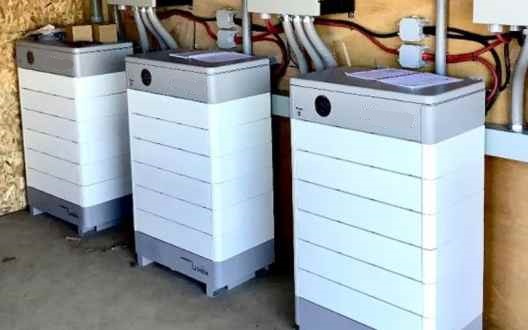
Tauchen tiefer: Der Return on Investment
Schauen wir uns das Wertversprechen an:
- Rechnungsreduzierung: Mit einer Batterie können Sie den „solaren Eigenverbrauch“ maximieren." Anstatt Ihren überschüssigen Solarstrom an das Netz zu verkaufen, Sie speichern es und nutzen es selbst, wenn Strom am teuersten ist. Dieser direkte Ausgleich ist der schnellste Weg, um eine Rendite Ihrer Solar- und Batterieinvestition zu erzielen.
- Notstromversorgung: Was kostet ein Stromausfall?? Für eine Familie, es könnte bedeuten, dass das Essen verdorben ist, keine Lichter, und kein Internet. Für jemanden, der von zu Hause aus arbeitet, es bedeutet Produktivitätsverlust. Ein Akku sorgt für nahtlosen Anschluss, still, und automatische Stromversorgung, sobald das Netz ausfällt.
- Skalierbarkeit: Dies ist ein einzigartiger Vorteil des stapelbaren Designs. Sie müssen nicht massiv kaufen, heute ein überdimensioniertes System. Sie können mit einem 10-kWh-System beginnen und, wenn Sie später ein Elektrofahrzeug kaufen oder eine Klimaanlage einbauen, Sie können einfach von einem Fachmann ein weiteres 5-kWh- oder 10-kWh-Modul hinzufügen lassen. Dadurch wird die Energiespeicherung zugänglicher und anpassungsfähiger.
GYCX Solar Story: „Ein Kunde in Seoul zögerte wegen der Kosten einer großen Batterie. Wir haben ein stapelbares 10-kWh-Startersystem installiert. Ein Jahr später, Sie haben ein Elektrofahrzeug gekauft. Das Upgrade war einfach und kostengünstig – wir haben gerade ein zweites 10-kWh-Modul zu ihrem bestehenden Setup hinzugefügt. Sie liebten die Flexibilität."
Was ist das 80 20 Regel für Lithiumbatterien?
Sie haben vielleicht schon davon gehört "80/20 Regel1" zum Aufladen von Telefonen oder Laptops und fragte mich, ob dies auch für große Heimbatterien gilt. Was ist diese Regel?, und ist es für Sie wichtig? Zustand der Batterie2?
Die „80/20-Regel“.," genauer gesagt: „20-80-Regel.“," ist eine Richtlinie zur Maximierung der Zyklenlebensdauer einiger Arten von Lithium-Ionen-Batterien. Es empfiehlt sich für den täglichen Gebrauch, Sie sollten versuchen, den Ladezustand der Batterie aufrechtzuerhalten zwischen 20% Und 80%. Vermeiden Sie die Extreme eines Full 100% Ladung und eine tiefe 0% Entladung kann die Belastung des Akkus verringern und zu einer längeren Lebensdauer beitragen.
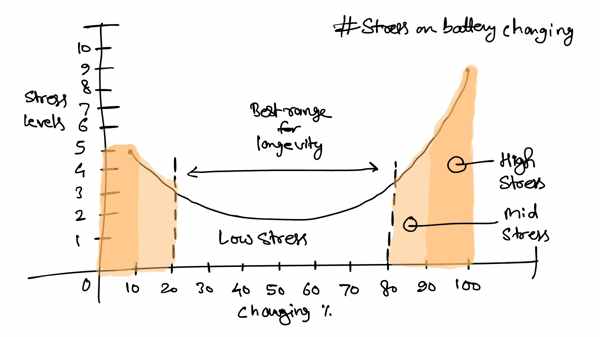
Tauchen tiefer: Eine Best Practice für die Batterielebensdauer
Hier ist ein genauerer Blick auf die Regel und wie sie auf a anwendbar ist Stapelbare Heimbatterie:
- Warum es funktioniert: Lithium-Ionen-Batterien unterliegen der höchsten chemischen und mechanischen Belastung, wenn sie sich unter sehr hohen oder sehr niedrigen Spannungen befinden, was bedeutet, dass er fast voll oder fast leer ist. Im „Sweet Spot“ agieren" in der Mitte ist schonender für die internen Komponenten, was zu einer längeren Gesamtlebensdauer führt.
- Ist es für LFP notwendig?? Diese Regel ist für Chemikalien wie NMC am kritischsten, die in der Unterhaltungselektronik üblich sind. Der LFP (Lithium -Eisenphosphat) Die in den besten Heimbatteriesystemen verwendete Chemie ist viel robuster und toleranter gegenüber Aufladungen 100%. Jedoch, Das Grundprinzip, dass flachere Zyklen weniger stressig sind als tiefere Zyklen, gilt immer noch.
- Wie moderne Systeme damit umgehen: Die gute Nachricht ist, dass Sie dies nicht manuell verwalten müssen! Mit einem modernen BESS von Gycx Solar können Sie diese Grenzwerte direkt in die Software des Systems programmieren. Eine häufige und äußerst effektive Einstellung ist:
- Legen Sie eine Backup-Reserve fest: Sie können es dem System sagen, „Niemals unten entladen 20% bei normalem täglichen Gebrauch; Speichern Sie das 20% für einen Stromausfall." Dies verhindert automatisch tägliche Tiefentladungen und garantiert Ihnen stets eine Gangreserve.
- Das System wechselt dann zwischen Ihren Reservestufen (Z.B., 20%) Und 100% jeden Tag, was für langlebige LFP-Batterien absolut sicher und normal ist. Dadurch erhalten Sie das Beste aus beiden Welten: Maximale Nutzung Ihrer Solarenergie und eine geschützte Reservereserve, Und das alles bei gleichzeitiger Förderung einer langen und gesunden Lebensdauer Ihrer Batterie.
Eine 10-kWh-Batterie ist ein leistungsstarker Ausgangspunkt für die Energiespeicherung zu Hause, Aber sein wahres Potenzial wird in einem modularen System freigesetzt, Stapelbare Heimbatterie System. Dieser Ansatz bietet die Flexibilität, Ihr System perfekt zu dimensionieren, die Sicherheit langlebiger LFP-Technologie, und den Wert einer zukunftssicheren Investition. Durch das Verständnis von Best Practices wie dem 20-80 Regel3, Sie können sicherstellen, dass Ihr System Ihnen auch in den kommenden Jahren zuverlässig dient.
Wenn Sie weitere Fragen zur Dimensionierung einer Batterie für Ihr Zuhause haben oder die Vorteile eines skalierbaren Systems erkunden möchten, Unser Expertenteam bei GYCX Solar hilft hier, um zu helfen. Kontaktieren Sie uns für eine professionelle Beratung!
Das verstehen 80/20 Die Regel kann Ihnen dabei helfen, die Lebensdauer und Leistung Ihres Akkus zu optimieren. ↩
Wenn Sie sich mit Tipps zur Erhaltung des Batteriezustands befassen, können Sie die Lebensdauer und Effizienz Ihrer Heimbatterie erheblich verlängern. ↩
Erfahren Sie mehr über die 20-80 Regel, um den Batterieverbrauch zu optimieren und seine Lebensdauer effektiv zu verlängern. ↩
